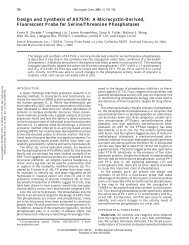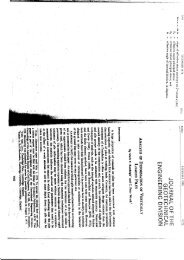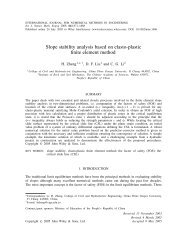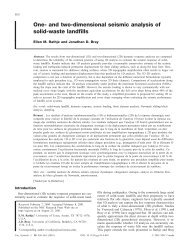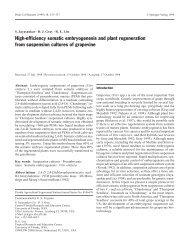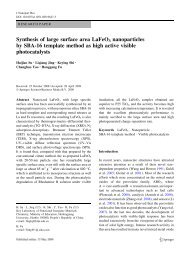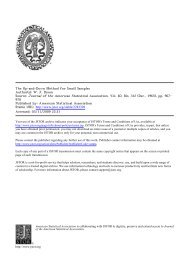PROPAGATION OF ELASTIC WAVES IN LAYERED MEDIA BY ...
PROPAGATION OF ELASTIC WAVES IN LAYERED MEDIA BY ...
PROPAGATION OF ELASTIC WAVES IN LAYERED MEDIA BY ...
You also want an ePaper? Increase the reach of your titles
YUMPU automatically turns print PDFs into web optimized ePapers that Google loves.
380 BULLET<strong>IN</strong> <strong>OF</strong> THE SEISMOLOGICAL SOCIETY <strong>OF</strong> AMERICAA = AS + ARB = BS+BR (35)Here AS and BS are the horizontal and vertical displacements due to the sourcealone, and AR and BR are the remaining parts of the horizontal and vertical displacementsdue to all other causes. The values of AS and BS can always be deter-16.0X8.0I£o 4'.o ' ' ' ,4:0 f,,~,/,~-8.016.0n~, 8.0 .~ ,,,z'o 4:o 6.o ,4:.o , t~,/d-8.CFIG. 7. Vertical displacement on the surface of a layered half-space. An impulsive, compressional,point source is located midway between the surface and interface. (p2 = 2/1.21pl ,vc2 = 1.1v~, , v~ = 1.lye, .) The observation point is on the surface at a distance of five-layerthicknesses from the epicenter. The first and second curves correspond to pulse widths of 1.2and 1.6, respectively. Results obtained using finite differences.mined exactly. The values of AR and BR represent reflections and other contributionsfrom the free surface and/or interface and are always bounded. We proceed asfollows: (1) Calculate values of AR and BR in I using the finite difference equationscheme. (2) Calculate vahxes of A and B in II using the finite difference equationscheme. (3) From the calculation of AR and BR in I, calculate A and B along theinner dotted line using equation (35). These values provide the boundary valuesneeded to calculate A and B in II using the finite difference equation scheme.(4) Similarly, from the calculation of A and B in II, calculate AR and BR along the



